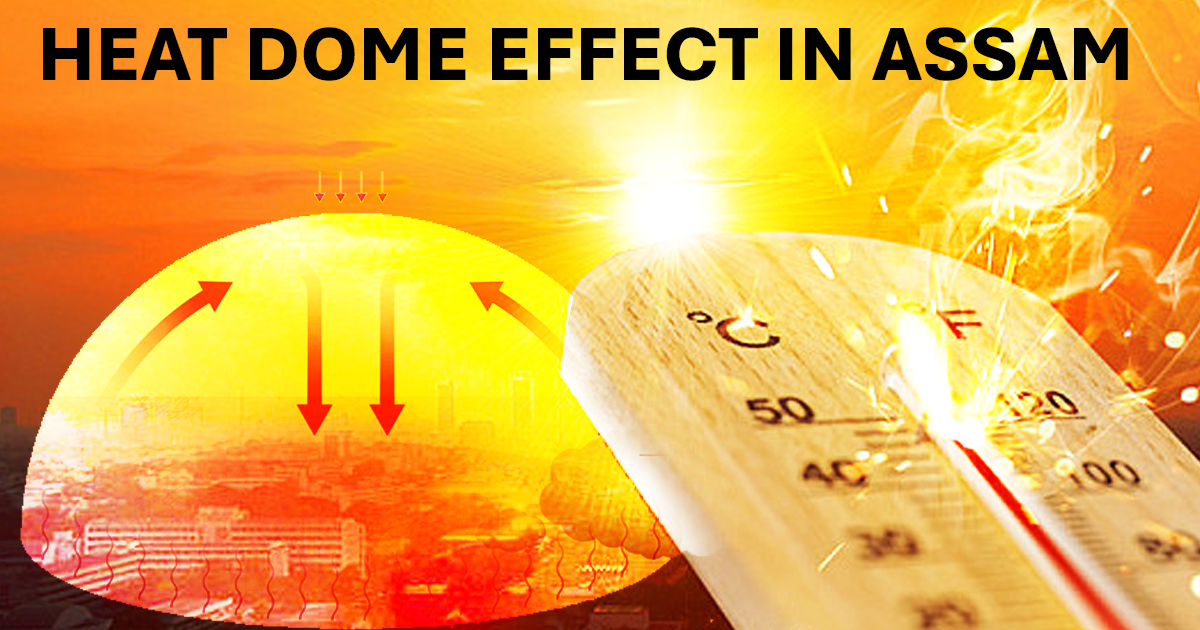
Context: The extreme heat in Assam has been attributed to the heat dome effect, which has caused unusually high temperatures in the region.
What is a Heat Dome?
- Definition: A heat dome is a high-pressure system that traps warm air over an area, resulting in prolonged periods of intense heat.
- Formation: It occurs when ocean temperatures change significantly, causing warm air to rise. This warm air becomes trapped by high-pressure systems, which prevents it from dispersing.
- Impact: The trapped air blocks cloud formation, allowing more sunlight to reach the ground and further intensify the heat.
Causes of the Heat Dome in Assam:
- Weakening Monsoon Circulation: Typically, air circulation from the Bay of Bengal helps cool the region. This year, the absence of this circulation has allowed high-pressure systems to dominate.
- Soil Moisture: Normally, soil moisture cools the area at night, but its depletion has contributed to sustained high temperatures.
- Climate Change: Altered global air currents, driven by climate change, have impacted monsoon patterns, further contributing to the formation of the heat dome.
Implications of the Heat Dome:
- Human Health: Prolonged exposure to extreme heat can lead to heat-related illnesses like heat stroke and exhaustion.
- Agriculture: The intense heat can damage crops, dry out vegetation, and lead to droughts, affecting food production.
- Energy Demand: Increased temperatures cause a rise in energy consumption as more people rely on cooling systems to stay comfortable.




